rotten > Library > Culture > Card Cheats
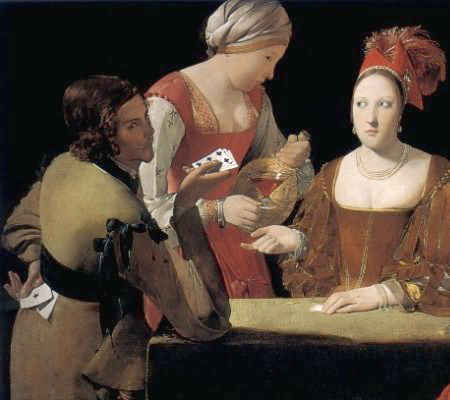
Card Cheats
Traditional parlor games like Five Card Stud, Texas Hold 'Em, Blackjack and
Baccarat might have been a lot more fun a few hundred years ago, without all
those swiveling casino cameras trained on your every tweak and twitch.
The history of card cheating as pop-cultural indulgence was first
illustrated in oil paintings by Georges de La Tour and Michelangelo Merisis
da Caravaggio, who in the early 1400s and 1500s brought their visions of courtly
play into public view. Opting not to airbrush away Norman Rockwellian visuals
of individual treachery and conspiracy among thieves, these paintings
are content to wink directly at the viewer, inviting him or her to cast aside
suspicion and celebrate a shared deceit.
Card cheating as a viable career choice was first openly propositioned
in 1902 by S. W. Erdnase, in his damning anonymous treatise, Artifice, Ruse
and Subterfuge, also known as The
Expert at the Card Table.
Erdnase's publication revealed for the first time in print nearly every cheating
strategy imaginable, most of which are still being referenced by today's top
hustlers and teenage magicians.
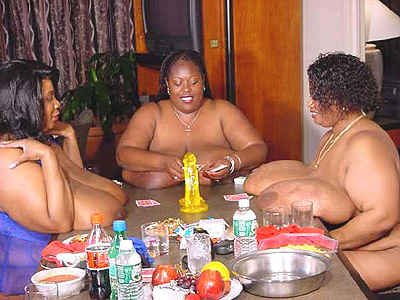 Erdnase,
whose real identity has adequately eluded historians, offered his book to the
public with no excuse for its existence: "To
all lovers of card games it should prove interesting, and as a basis of card
entertainment it is practically inexhaustible. It will not make the innocent
vicious, or transform the the pastime player into a professional; or make the
fool wise, or curtail the annual crop of suckers—but whatever the result
may be, if it sells, it will accomplish the primary motive of its author, as
he needs the money." Erdnase,
whose real identity has adequately eluded historians, offered his book to the
public with no excuse for its existence: "To
all lovers of card games it should prove interesting, and as a basis of card
entertainment it is practically inexhaustible. It will not make the innocent
vicious, or transform the the pastime player into a professional; or make the
fool wise, or curtail the annual crop of suckers—but whatever the result
may be, if it sells, it will accomplish the primary motive of its author, as
he needs the money."
It is cautiously recommended
to patrons of the Rotten
Library that
these techniques be exerted only upon despised family members (or friends
of friends) in private home games where quick getaways are a conceivable
possibility.
Wholesale
magic dealers manufacture holdout devices: retractable mechanical arms
capable of thrusting up to fifteen cards directly into the palm of your hand
when they're needed most. Holdouts are strapped to the forearm with elastic
belts, enabling free movement of the elbow when the wearer is sitting or standing.
This
rig can easily facilitate the production or exchange of cards by applying tension
and release: making a strong fist is often enough to trigger the prop. Cards
are bent 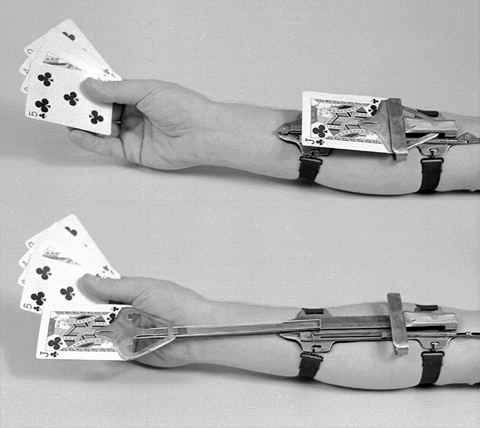 slightly
during the delivery process, making them easy to conceal and grip between your
fingers and integrate into your existing array. slightly
during the delivery process, making them easy to conceal and grip between your
fingers and integrate into your existing array.
Taking advice from the Erdnase book into the twentieth century, a simplified
device called the "reverse
holdout" has become the premiere cheating strategy of choice during SAT exams
at high schools across the nation.
Imagine
you're in class taking a test, clutching a cheat sheet in your hand. You've
printed your notes on sturdy cardboard, and anchored one end of it (through
a punched-out hole, or otherwise) to a rubber band conveniently safety-pinned
all the way up inside of your shirt sleeve or sweater vest. When the teacher
walks by, simply release the card from your grip, and the elastic will "zip" the
card up your sleeve, immediately away from curious eyeballs. Naturally you
will have to reach your hand up your sleeve to retrieve the cheat sheet, but
that can only be described as a small price to pay for the spontaneous
ability to show a teacher your hands and balls are empty and clean on
all sides. This cheating strategy works best when used in conjunction with
a long-sleeved, white-collared shirt with unbuttoned cuffs. It takes a little
practice: the last thing you want is a cheat sheet snagging on your wrist watch,
or a rubber band / safety pin combo snapping off and shooting across the room
into someone's face.
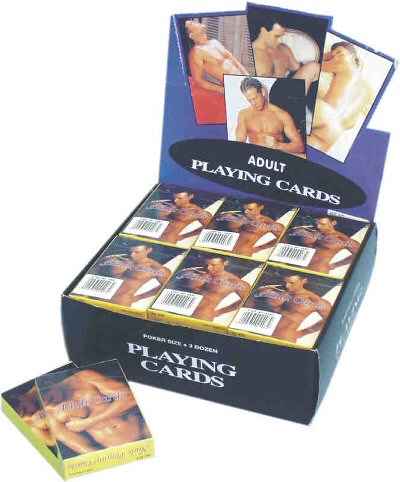 Marked
cards, sometimes referred to as "counterfeit" cards, mimick the styles
and colors of popular, respectable brands. Poor quality inks and card stock
can warrant immediate detection, leading to significantly embarrassing gun
play during game play. Some false cards have spots of missing print, others
have blotches of ink on the face cards. Jacks, Queens,
and Kings are the most difficult to forge due to their exacting, complicated
design and four-color template. In earlier times, even an expensive deck
of marked cards might look a little faded, since printing companies fiercely
guarded their nineteenth-century breakthroughs in spray-mount coating, slicking,
and matting. Marked
cards, sometimes referred to as "counterfeit" cards, mimick the styles
and colors of popular, respectable brands. Poor quality inks and card stock
can warrant immediate detection, leading to significantly embarrassing gun
play during game play. Some false cards have spots of missing print, others
have blotches of ink on the face cards. Jacks, Queens,
and Kings are the most difficult to forge due to their exacting, complicated
design and four-color template. In earlier times, even an expensive deck
of marked cards might look a little faded, since printing companies fiercely
guarded their nineteenth-century breakthroughs in spray-mount coating, slicking,
and matting.
One of counterfeiters'
earliest targets was a mimick of the Bee bridge-size deck manufactured
by the U.S. Playing Card Company of Cincinnati, Ohio. Fake Bee decks
are still being manufactured: they're factory-marked for suit and value,
and etched into the uppermost (and lowermost) lattice work on the back
of each card are tiny, coded indicators revealing the hand.
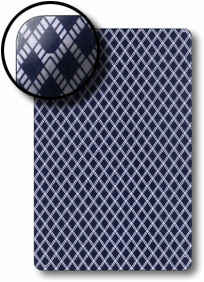 For
instance. The card shown to the right is in fact the deuce of clubs, so
represented by a slight "clipping" of the lower corner of the first full
diamond-shape located in blue negative space. To represent an
ace, the diamond might have been clipped on top. A similar mark representing
the suit of spades can be seen on the opposite side, even without the magnification.
In such a manner, even an ever-so-slightly fanned out poker deal of five
cards—jealously guarded in either hand—can be visually decoded by
the remaining players at the table. For
instance. The card shown to the right is in fact the deuce of clubs, so
represented by a slight "clipping" of the lower corner of the first full
diamond-shape located in blue negative space. To represent an
ace, the diamond might have been clipped on top. A similar mark representing
the suit of spades can be seen on the opposite side, even without the magnification.
In such a manner, even an ever-so-slightly fanned out poker deal of five
cards—jealously guarded in either hand—can be visually decoded by
the remaining players at the table.
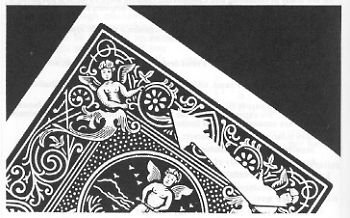 Another
commonly forged deck is of course the world-renowned Bicycle pack,
a brand that's been in continuous production since 1885. Today, any traditional
magic shop carries factory-marked and sealed Bicycle decks employing
subtle shade work on the back side. Shading involves reducing, obscuring or
thickening portions of a complex design to embed data about a card's suit
and value. One errant thin petal in a wheel of otherwise plump flowers in the
card shown to the left, for instance, is the signature mark of a shading system.
This technique is called block out work, and it's so widely known that
many poker players in private games regularly scan Bicycle decks for
tell-tale markings before a round even begins. A backwards
rifle is the
easiest way to spot a marked deck: the cheat marks dance along the flowers
in the card design like a flip-book animation. Another
commonly forged deck is of course the world-renowned Bicycle pack,
a brand that's been in continuous production since 1885. Today, any traditional
magic shop carries factory-marked and sealed Bicycle decks employing
subtle shade work on the back side. Shading involves reducing, obscuring or
thickening portions of a complex design to embed data about a card's suit
and value. One errant thin petal in a wheel of otherwise plump flowers in the
card shown to the left, for instance, is the signature mark of a shading system.
This technique is called block out work, and it's so widely known that
many poker players in private games regularly scan Bicycle decks for
tell-tale markings before a round even begins. A backwards
rifle is the
easiest way to spot a marked deck: the cheat marks dance along the flowers
in the card design like a flip-book animation.
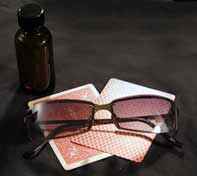 If
the marking mechanism is sufficiently advanced enough to pass a rifle test,
the cheating system might actually be invisible to
the naked eye. The markings on luminous
shade cards are applied with a quick brush of liquid solution impervious
to standard UV light. The marks can only be observed through a special filter,
ostensibly affixed to the inner lens of a cheater's sunglasses. Such a device
would effectively make you capable of seeing through cards, walls, and ladies'
underpants like Neo in The
Matrix. If
the marking mechanism is sufficiently advanced enough to pass a rifle test,
the cheating system might actually be invisible to
the naked eye. The markings on luminous
shade cards are applied with a quick brush of liquid solution impervious
to standard UV light. The marks can only be observed through a special filter,
ostensibly affixed to the inner lens of a cheater's sunglasses. Such a device
would effectively make you capable of seeing through cards, walls, and ladies'
underpants like Neo in The
Matrix.
Card cheats
have formulated age-old and inexhaustible strategies for dynamically marking
cards in active play—cards they didn't have time to prepare in advance.
The easiest and cleanest method involves arranging cards in a one-way deck:
a pack of cards with an asymmetric back design or retarded photograph, i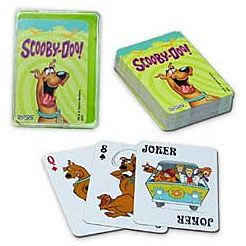 n
which cards of higher value are turned upside down. While individual cards
often get inverted during play, they won't be disturbed by traditional rifle
shuffles or one-handed cuts. By monitoring the orientation of cards which slide
from the dealer's hand to players or the central playing area, cheaters have
a better chance of knowing where the Aces are at key points during the game. n
which cards of higher value are turned upside down. While individual cards
often get inverted during play, they won't be disturbed by traditional rifle
shuffles or one-handed cuts. By monitoring the orientation of cards which slide
from the dealer's hand to players or the central playing area, cheaters have
a better chance of knowing where the Aces are at key points during the game.
The next baby step up is nicking, so named because during play,
the cheater quietly slices a portion of the card open with a freshly-sharpened
thumbnail. Nail marking requires that the cheater not
bite his nails for several
weeks: the natural enamels must grow strong enough to perforate the edges
of slick, coated card stock quickly and cleanly. As a nicker at the table goes
through hand after hand, more and more cards can be marked in easily discernable
ways. A nick along the top versus a nick along the side, for instance. Two
nicks next to one another. A nick on the corner. Advanced nicking involves
localizing the card marks: performing the same nick twice so the nick
is visible whether or not the card is right side up. Anything
which makes its way into your fingers can be nicked—and equally helpful
is nicking the shitty
cards, which can
help telegraph well in advance when your opponent is bluffing.
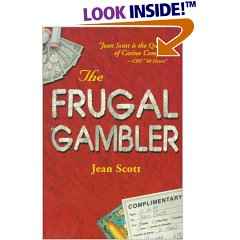 If
you're feeling only slightly bolder than a nicker, try the time-honored technique
of daubing: the act of deliberately smudging the back
or sides of a card in a particular place with a particular substance. At If
you're feeling only slightly bolder than a nicker, try the time-honored technique
of daubing: the act of deliberately smudging the back
or sides of a card in a particular place with a particular substance. At 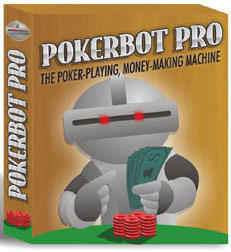 a
poker table, the two easiest sources of daubing dirt is black ink (transferred
from a nearby newspaper to your moistened thumb) or cigarette soot from a dirty
ash tray. If a fellow player observes you dipping your fingers into the ashes,
insist you were extinguishing a smoldering ember. Black coffee and beverages
with Kahlua or fruit juice are equally viable substitutes. Subtlety is the
overarching rule: don't smear your chosen card up with blackface like Ted Danson
at a Friars Club roast. Nor should you apply a substance too tacky, lest cards
be observed sticking together in such a way that a deck you've been daubing
gets discarded in favor of one less "problematic". Stains on card edges can
last through several games, provided nobody gets wise. Magician's "daub," a
semi-hard paste which marks cards in play, is available for pennies on the
dollar, and it's suitable for applying to back designs of any color or complexity. a
poker table, the two easiest sources of daubing dirt is black ink (transferred
from a nearby newspaper to your moistened thumb) or cigarette soot from a dirty
ash tray. If a fellow player observes you dipping your fingers into the ashes,
insist you were extinguishing a smoldering ember. Black coffee and beverages
with Kahlua or fruit juice are equally viable substitutes. Subtlety is the
overarching rule: don't smear your chosen card up with blackface like Ted Danson
at a Friars Club roast. Nor should you apply a substance too tacky, lest cards
be observed sticking together in such a way that a deck you've been daubing
gets discarded in favor of one less "problematic". Stains on card edges can
last through several games, provided nobody gets wise. Magician's "daub," a
semi-hard paste which marks cards in play, is available for pennies on the
dollar, and it's suitable for applying to back designs of any color or complexity.
| Hand |
Example |
Chances |
| Five Aces (with Joker) |
A A A A Jo |
1 in 2,869,685 |
| Royal Straight Flush |
AS KS QS JS TS |
1 in 649,740 |
| Straight Flush |
6D 7D 8D 9D 10D |
1 in 64,974 |
| Four Aces |
A A A A |
1 in 52,470 |
| Four of a Kind |
7 7 7 7 |
1 in 4,165 |
| Full House |
3 3 8 8 8 |
1 in 694 |
| Flush |
D D D D D |
1 in 509 |
| Straight |
4 5 6 7 8 |
1 in 255 |
| Three of a Kind |
7 7 7 |
1 in 47 |
| Two Pair |
7 7 Q Q |
1 in 21 |
| Pair |
9 9 |
1 in 2 |
| Odds if you cheat: |
1 in 1 |
|
Possibly you'd prefer to crimp your ride. Crimping is the act
of warping, twisting, bending, creasing, or otherwise dog-earing a selected
card, and it serves a far greater purpose than secret identification. When
the corner of a playing card has been bent, its position anywhere in the pack
is easily spotted. Valued cards in the deck are effectively "bumped" by
an arced fraction of a degree, casting a slight but slanted shadow onto the
lower hemisphere of the pack. By eyeballing the thickness of pack hemispheres
and estimating the number of cards above or below a crimp, one can more confidently
predict the next occurrence of a winning hand. Please remember that crimping
is not a full, snapping fold—you're only warping it a half inch. Don't
curl it up like a quesadilla.
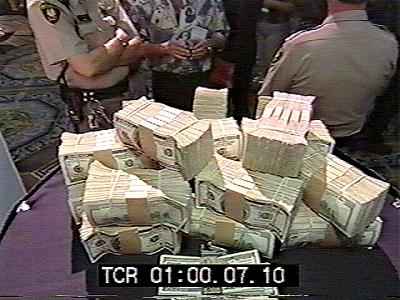 Card
counting is an activity about as much fun as it sounds: a mathematical
averaging system inside your own head,
where points called "weights" are
mentally assigned to the value of every card in play.
Counting is by and large the only statistically-proven method of gaining
some level of advantage over the casino—but casinos have thwarted most
counting techniques by mandating that six to eight decks be shuffled
together prior
to even the simplest games of Blackjack. Over one hundred different card
counting systems have been published as of this writing in 2006. Card
counting is an activity about as much fun as it sounds: a mathematical
averaging system inside your own head,
where points called "weights" are
mentally assigned to the value of every card in play.
Counting is by and large the only statistically-proven method of gaining
some level of advantage over the casino—but casinos have thwarted most
counting techniques by mandating that six to eight decks be shuffled
together prior
to even the simplest games of Blackjack. Over one hundred different card
counting systems have been published as of this writing in 2006.
Despite casinos' best efforts to demonize the
process, card counting is not illegal and therefore cannot be considered
much of a cheat. Nevada courts ruled long ago that "players are
free to use any information made available to them," short of conspiracy
or collusion with
casino personnel, or using an electronic card counter. The house reserves
the right to refuse service at any time, however—and players are regularly
asked to leave, or perm-banned, or arrested for trespassing.
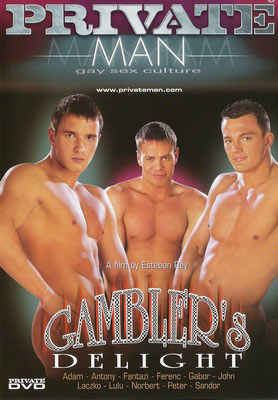 As a suspected card counter, you might be back roomed—an outdated
intimidation process in which casino security taps you on the shoulder
and asks you to please follow them. Flanked by sour-faced guards, you're marched
across the main lobby and through a door marked AUTHORIZED PERSONNEL ONLY.
You get a lecture and your picture taken. They escort you into a long hallway,
down a poorly lit staircase, and through one final door which claims ALARMS
WILL SOUND if opened. Then you're pushed out that door, into the bright sunshine
and/or a mud puddle. As a suspected card counter, you might be back roomed—an outdated
intimidation process in which casino security taps you on the shoulder
and asks you to please follow them. Flanked by sour-faced guards, you're marched
across the main lobby and through a door marked AUTHORIZED PERSONNEL ONLY.
You get a lecture and your picture taken. They escort you into a long hallway,
down a poorly lit staircase, and through one final door which claims ALARMS
WILL SOUND if opened. Then you're pushed out that door, into the bright sunshine
and/or a mud puddle.
One
hundred years after the initial publication of Erdnase's groundbreaking framework
for career card cheating, the popularity of Poker is again surging across the
Western hemisphere. This time around, it's popular with the NASCAR crowd, celebrities
"showing down" on Bravo, Chinese math students looking to oust cigar-chompin'
frat boys, and overweight, online shut-ins with severe reality problems.
Why
not join the new American rennaisance and learn to cheat at cards? At
least put it on your to-do list.
Pornopolis |
Rotten |
Faces of Death |
Famous Nudes
|

 Erdnase,
whose real identity has adequately eluded historians, offered his book to the
public with no excuse for its existence: "To
all lovers of card games it should prove interesting, and as a basis of card
entertainment it is practically inexhaustible. It will not make the innocent
vicious, or transform the the pastime player into a professional; or make the
fool wise, or curtail the annual crop of suckers—but whatever the result
may be, if it sells, it will accomplish the primary motive of its author, as
he needs the money."
Erdnase,
whose real identity has adequately eluded historians, offered his book to the
public with no excuse for its existence: "To
all lovers of card games it should prove interesting, and as a basis of card
entertainment it is practically inexhaustible. It will not make the innocent
vicious, or transform the the pastime player into a professional; or make the
fool wise, or curtail the annual crop of suckers—but whatever the result
may be, if it sells, it will accomplish the primary motive of its author, as
he needs the money." slightly
during the delivery process, making them easy to conceal and grip between your
fingers and integrate into your existing array.
slightly
during the delivery process, making them easy to conceal and grip between your
fingers and integrate into your existing array. Marked
cards, sometimes referred to as "counterfeit" cards, mimick the styles
and colors of popular, respectable brands. Poor quality inks and card stock
can warrant immediate detection, leading to significantly embarrassing gun
play during game play. Some false cards have spots of missing print, others
have blotches of ink on the face cards. Jacks, Queens,
and Kings are the most difficult to forge due to their exacting, complicated
design and four-color template. In earlier times, even an expensive deck
of marked cards might look a little faded, since printing companies fiercely
guarded their nineteenth-century breakthroughs in spray-mount coating, slicking,
and matting.
Marked
cards, sometimes referred to as "counterfeit" cards, mimick the styles
and colors of popular, respectable brands. Poor quality inks and card stock
can warrant immediate detection, leading to significantly embarrassing gun
play during game play. Some false cards have spots of missing print, others
have blotches of ink on the face cards. Jacks, Queens,
and Kings are the most difficult to forge due to their exacting, complicated
design and four-color template. In earlier times, even an expensive deck
of marked cards might look a little faded, since printing companies fiercely
guarded their nineteenth-century breakthroughs in spray-mount coating, slicking,
and matting. For
instance. The card shown to the right is in fact the deuce of clubs, so
represented by a slight "clipping" of the lower corner of the first full
diamond-shape located in blue negative space. To represent an
ace, the diamond might have been clipped on top. A similar mark representing
the suit of spades can be seen on the opposite side, even without the magnification.
In such a manner, even an ever-so-slightly fanned out poker deal of five
cards—jealously guarded in either hand—can be visually decoded by
the remaining players at the table.
For
instance. The card shown to the right is in fact the deuce of clubs, so
represented by a slight "clipping" of the lower corner of the first full
diamond-shape located in blue negative space. To represent an
ace, the diamond might have been clipped on top. A similar mark representing
the suit of spades can be seen on the opposite side, even without the magnification.
In such a manner, even an ever-so-slightly fanned out poker deal of five
cards—jealously guarded in either hand—can be visually decoded by
the remaining players at the table. Another
commonly forged deck is of course the world-renowned Bicycle pack,
a brand that's been in continuous production since 1885. Today, any traditional
magic shop carries factory-marked and sealed Bicycle decks employing
subtle shade work on the back side. Shading involves reducing, obscuring or
thickening portions of a complex design to embed data about a card's suit
and value. One errant thin petal in a wheel of otherwise plump flowers in the
card shown to the left, for instance, is the signature mark of a shading system.
This technique is called block out work, and it's so widely known that
many poker players in private games regularly scan Bicycle decks for
tell-tale markings before a round even begins. A backwards
rifle is the
easiest way to spot a marked deck: the cheat marks dance along the flowers
in the card design like a flip-book animation.
Another
commonly forged deck is of course the world-renowned Bicycle pack,
a brand that's been in continuous production since 1885. Today, any traditional
magic shop carries factory-marked and sealed Bicycle decks employing
subtle shade work on the back side. Shading involves reducing, obscuring or
thickening portions of a complex design to embed data about a card's suit
and value. One errant thin petal in a wheel of otherwise plump flowers in the
card shown to the left, for instance, is the signature mark of a shading system.
This technique is called block out work, and it's so widely known that
many poker players in private games regularly scan Bicycle decks for
tell-tale markings before a round even begins. A backwards
rifle is the
easiest way to spot a marked deck: the cheat marks dance along the flowers
in the card design like a flip-book animation. If
the marking mechanism is sufficiently advanced enough to pass a rifle test,
the cheating system might actually be invisible to
the naked eye. The markings on luminous
shade cards are applied with a quick brush of liquid solution impervious
to standard UV light. The marks can only be observed through a special filter,
ostensibly affixed to the inner lens of a cheater's sunglasses. Such a device
would effectively make you capable of seeing through cards, walls, and ladies'
underpants like Neo in The
Matrix.
If
the marking mechanism is sufficiently advanced enough to pass a rifle test,
the cheating system might actually be invisible to
the naked eye. The markings on luminous
shade cards are applied with a quick brush of liquid solution impervious
to standard UV light. The marks can only be observed through a special filter,
ostensibly affixed to the inner lens of a cheater's sunglasses. Such a device
would effectively make you capable of seeing through cards, walls, and ladies'
underpants like Neo in The
Matrix.  n
which cards of higher value are turned upside down. While individual cards
often get inverted during play, they won't be disturbed by traditional rifle
shuffles or one-handed cuts. By monitoring the orientation of cards which slide
from the dealer's hand to players or the central playing area, cheaters have
a better chance of knowing where the Aces are at key points during the game.
n
which cards of higher value are turned upside down. While individual cards
often get inverted during play, they won't be disturbed by traditional rifle
shuffles or one-handed cuts. By monitoring the orientation of cards which slide
from the dealer's hand to players or the central playing area, cheaters have
a better chance of knowing where the Aces are at key points during the game.  If
you're feeling only slightly bolder than a nicker, try the time-honored technique
of daubing: the act of deliberately smudging the back
or sides of a card in a particular place with a particular substance. At
If
you're feeling only slightly bolder than a nicker, try the time-honored technique
of daubing: the act of deliberately smudging the back
or sides of a card in a particular place with a particular substance. At  a
poker table, the two easiest sources of daubing dirt is black ink (transferred
from a nearby newspaper to your moistened thumb) or cigarette soot from a dirty
ash tray. If a fellow player observes you dipping your fingers into the ashes,
insist you were extinguishing a smoldering ember. Black coffee and beverages
with Kahlua or fruit juice are equally viable substitutes. Subtlety is the
overarching rule: don't smear your chosen card up with blackface like Ted Danson
at a Friars Club roast. Nor should you apply a substance too tacky, lest cards
be observed sticking together in such a way that a deck you've been daubing
gets discarded in favor of one less "problematic". Stains on card edges can
last through several games, provided nobody gets wise. Magician's "daub," a
semi-hard paste which marks cards in play, is available for pennies on the
dollar, and it's suitable for applying to back designs of any color or complexity.
a
poker table, the two easiest sources of daubing dirt is black ink (transferred
from a nearby newspaper to your moistened thumb) or cigarette soot from a dirty
ash tray. If a fellow player observes you dipping your fingers into the ashes,
insist you were extinguishing a smoldering ember. Black coffee and beverages
with Kahlua or fruit juice are equally viable substitutes. Subtlety is the
overarching rule: don't smear your chosen card up with blackface like Ted Danson
at a Friars Club roast. Nor should you apply a substance too tacky, lest cards
be observed sticking together in such a way that a deck you've been daubing
gets discarded in favor of one less "problematic". Stains on card edges can
last through several games, provided nobody gets wise. Magician's "daub," a
semi-hard paste which marks cards in play, is available for pennies on the
dollar, and it's suitable for applying to back designs of any color or complexity.  Card
counting is an activity about as much fun as it sounds: a mathematical
averaging system inside your own head,
where points called "weights" are
mentally assigned to the value of every card in play.
Counting is by and large the only statistically-proven method of gaining
some level of advantage over the casino—but casinos have thwarted most
counting techniques by mandating that six to eight decks be shuffled
together prior
to even the simplest games of Blackjack. Over one hundred different card
counting systems have been published as of this writing in 2006.
Card
counting is an activity about as much fun as it sounds: a mathematical
averaging system inside your own head,
where points called "weights" are
mentally assigned to the value of every card in play.
Counting is by and large the only statistically-proven method of gaining
some level of advantage over the casino—but casinos have thwarted most
counting techniques by mandating that six to eight decks be shuffled
together prior
to even the simplest games of Blackjack. Over one hundred different card
counting systems have been published as of this writing in 2006. As a suspected card counter, you might be back roomed—an outdated
intimidation process in which casino security taps you on the shoulder
and asks you to please follow them. Flanked by sour-faced guards, you're marched
across the main lobby and through a door marked AUTHORIZED PERSONNEL ONLY.
You get a lecture and your picture taken. They escort you into a long hallway,
down a poorly lit staircase, and through one final door which claims ALARMS
WILL SOUND if opened. Then you're pushed out that door, into the bright sunshine
and/or a mud puddle.
As a suspected card counter, you might be back roomed—an outdated
intimidation process in which casino security taps you on the shoulder
and asks you to please follow them. Flanked by sour-faced guards, you're marched
across the main lobby and through a door marked AUTHORIZED PERSONNEL ONLY.
You get a lecture and your picture taken. They escort you into a long hallway,
down a poorly lit staircase, and through one final door which claims ALARMS
WILL SOUND if opened. Then you're pushed out that door, into the bright sunshine
and/or a mud puddle.